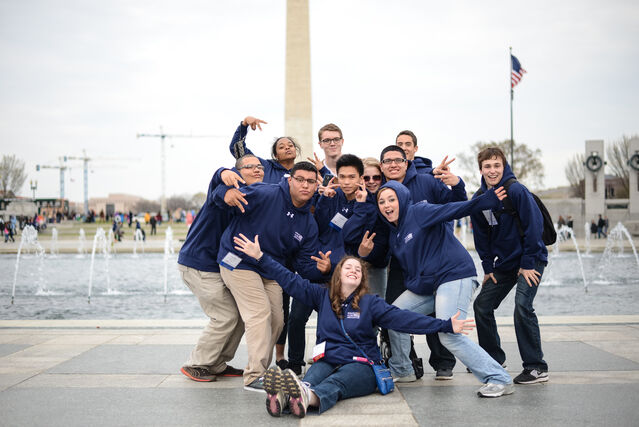Resilience
Hope in the Face of Adversity
Evidence of adversarial growth in a national sample of college students.
Posted July 30, 2021 Reviewed by Tyler Woods
Key points
- Adverse childhood experiences can lead to positive outcomes, such as resilience and adversarial growth.
- A recent study of college students found strong associations between adversities experienced and increased motivation to succeed and help others.
- Adversity-induced motivation to succeed fueled college students’ interest in working for social change, aspirations to lead, and self-efficacy.
Guest post by Emily C. Chen-Bendle & Gregory C. Wolniak, University of Georgia, Institute of Higher Education with Jennifer L. Tackett, Northwestern University, Department of Psychology
It has been a tough couple of years. As the U.S. gradually starts to return to something like normal, many of us are still reeling from the effects of the pandemic. Death, illness, grief, job loss, businesses closing, and mental illness are just some of the challenges we face as a result of the Covid-19 crisis.
It’s hard not to feel overwhelmed, and it’s hard not to feel hopeless.
The reality is that many of us have already experienced substantial adversity, in one form or another. And, unfortunately, many people experienced that adversity at a young age. Experiences like these are so common, in fact, that the CDC has a term to describe them: adverse childhood experiences (ACEs)1. It’s an umbrella term that encompasses a wide range of really difficult experiences, stretching from abuse, to domestic violence, to living in a household with someone who was abusing substances, incarcerated, or experiencing mental illness, to the divorce or separation of parents2. ACEs are alarmingly widespread. The CDC reports that 61% of adults have lived through one or more ACE, and 16% have experienced four or more different categories of ACEs1.
A lot of what researchers have learned about ACEs is hard to hear, and links being exposed to ACEs to even more challenges later in life, like diagnoses of heart disease and cancer3 and mental illness during college4.
However, academic research also suggests that the picture is more complicated than that.
Investigating Opportunity for Adversarial Growth
For a surprising number of people, overcoming adversity leads to positive outcomes. One of these outcomes is resilience. In fact, one study measured resilience in the aftermath of another large-scale traumatic event—9/11. Researchers determined that 65.1% of study participants demonstrated resilience in the wake of these terrorist attacks.5
Another positive outcome is known as adversarial growth. When people experience adversarial growth6, they actually end up in some way better off than they were before7. What might this look like? They might renew old friendships, turn more meaningfully to religion, or gain confidence in their abilities after realizing they can handle adverse situations8.
Adversity, resilience, and adversarial growth could be experienced at different points in peoples’ lives. However, they present particular challenges and opportunities for college students. What’s more, nearly one-third of college students nationwide have endured at least two adverse experiences4.
What happens to these students?
For several years, our team, led by Dr. Gregory Wolniak at the Institute of Higher Education at the University of Georgia, has been tracking a large group of students across the U.S. as they make their way through their college experiences. These are not your average college students—over 80% of these students have been through at least one experience of childhood adversity—many have gone through much more. In fact, these students have experienced an average of two adverse experiences prior to college, with 32% experiencing 3 or more ACEs. Yet in emerging research, we have also identified a remarkable tendency toward positive growth and change.

More than 9 out of every 10 of these students indicate that the adversities they experienced increased their motivation to succeed and provided inspiration to help others—and this is true even for students who have had many experiences of adversity.
What Does Adversarial Growth Predict? And What Underlies It?
Motivation to succeed is one thing, but even more interesting are indications that this motivation is linked to specific interests in working for social change, taking on leadership roles, and an enhanced sense of control over their lives when they enter college that continues to develop over the course of their college years.
It’s important to be careful here. The point is not to suggest that if 9 out of 10 college students in this study can positively reframe their adversity, then why can’t we all? Many factors contribute to the potential for adversarial growth. And researchers are still understanding what they are.
Some of what researchers are learning is very encouraging. Turning back to our study of college students, one of the more compelling findings is that students’ sense of belonging at college has a consistent positive influence on the adversarial growth we just described.
Let’s unpack this concept of a sense of belonging. What we are talking about is when a student feels accepted, supported, and comfortable—both on campus and within the broader campus community. Such findings are important, not only in pointing to potential underlying mechanisms accounting for adversarial growth, but also potential targets for intervention that might be especially important for students who have faced serious early adversity.

Other researchers have made similar connections, including that students who have formed more and stronger friendships felt a greater sense of belonging and resilience9. And particularly promising, researchers have begun to wrestle with what to do with these findings. How can we increase a sense of belonging? A group of scholars studying this issue in 2020 began to make some of those connections, calling for social supports specifically aimed at students who experienced childhood adversity, which included peer support programs10.
There is hope to be found in the research on college students struggling with adversity. Hope that adversity does not only lead to troubling outcomes. And hope that there are things we can do institutionally, collectively, and as individuals to give those around us the best chance to come back from the challenges that face so many of us right now, stronger than before.
We are more resilient, more capable of adversarial growth than we may realize. And we are more capable of supporting those around us in these difficult times. Our efforts, big and small, to foster a sense of belonging for those around us may help set the stage for turning points—leading to unforeseen positive growth and change.
References
1 CDC. (2019). Adverse Childhood Experiences (ACEs): Preventing early trauma to improve adult health. CDC Vitalsigns.
2 Merrick, M. T., Ford, D. C., Ports, K. A., & Guinn, A. S. (2018). Prevalence of adverse childhood experiences from the 2011-2014 behavioral risk factor surveillance system in 23 states. JAMA pediatrics, 172(11), 1038-1044.
3 Felitti, V. J., Anda, R. F., Nordenberg, D., Williamson, D. F., Spitz, A. M., Edwards, V., & Marks, J. S. (1998). Relationship of childhood abuse and household dysfunction to many of the leading causes of death in adults: The Adverse Childhood Experiences (ACE) Study. American journal of preventive medicine, 14(4), 245-258.
4 Karatekin, C. (2017). Adverse childhood experiences (ACEs), stress and mental health in college students. Stress and Health, 34(1), 36-45.
5 Bonanno, G. A., Galea, S., Bucciarelli, A., & Vlahov, D. (2006). Psychological resilience after disaster: New York City in the aftermath of the September 11th terrorist attack. Psychological science, 17(3), 181-186.
6 Linley, P., & Joseph, S. (2004). Positive change following trauma and adversity: A review. Journal of traumatic stress: official publication of the international society for traumatic stress studies 17(1), 11-21.
7 Linley, P. A., & Joseph, S. (2005). The Human Capacity for Growth Through Adversity. The American psychologist, 60(3), 262-264.
8 Tedeschi, R. G., & Calhoun, L. G. (2004). Posttraumatic growth: Conceptual foundations and empirical evidence. Psychological inquiry, 15(1), 1-18.
9 Pidgeon, A. M., Coast, G., Coast, G., Coast, G., & Coast, G. (2014). Examining characteristics of resilience among university students: An international study. Open journal of social sciences, 2(11), 14.
10 Watt, T., Kim, S., Ceballos, N., & Norton, C. (2020). People who need people: the relationship between adverse childhood experiences and mental health among college students. Journal of American College Health, 1-9.




